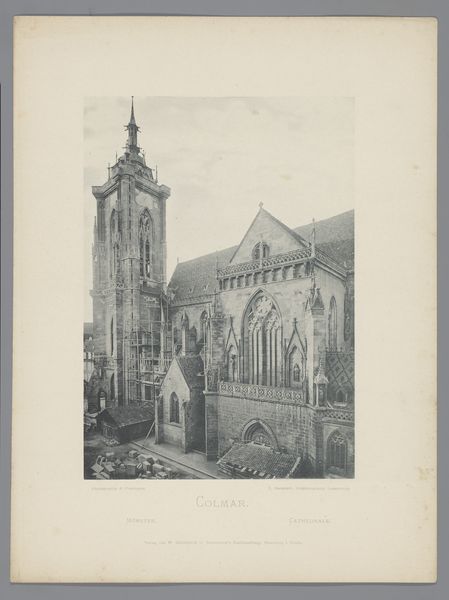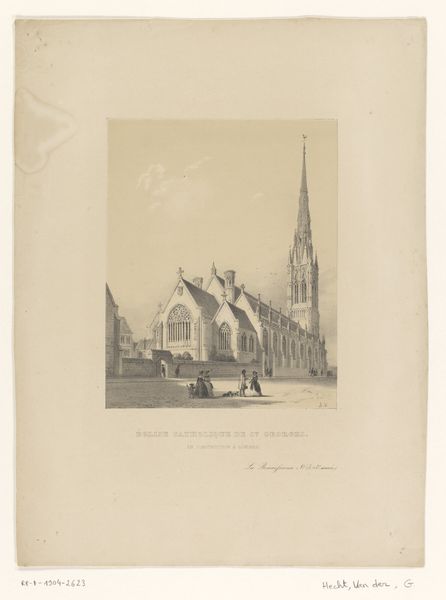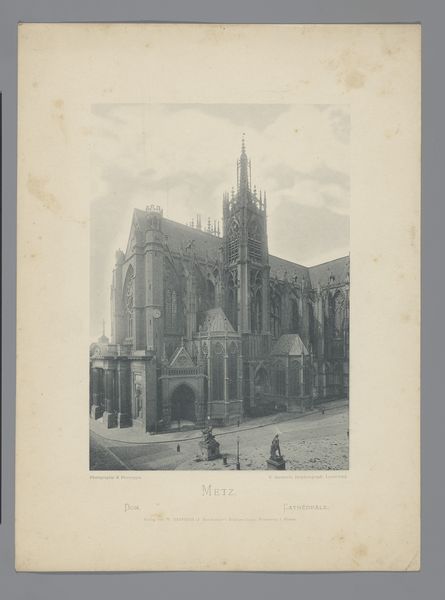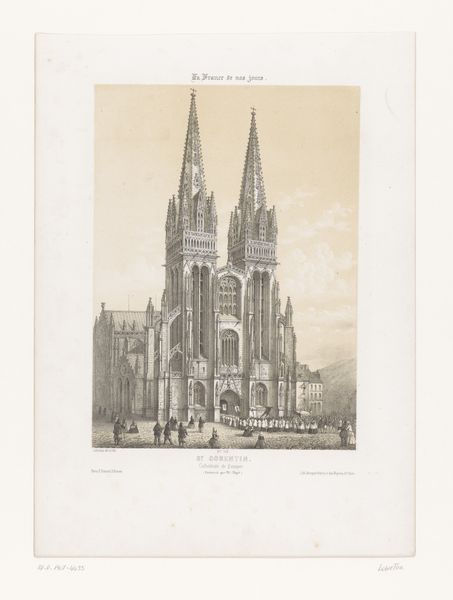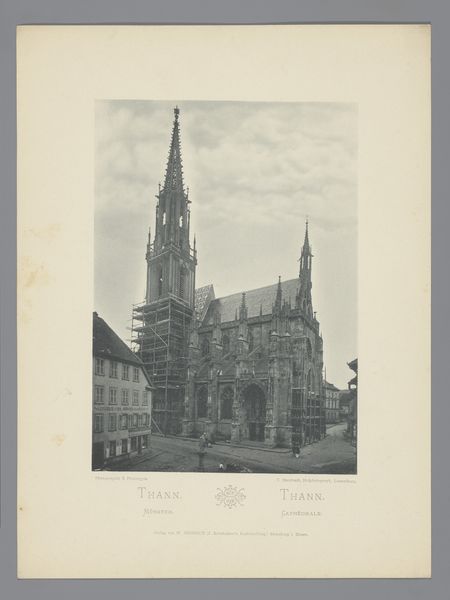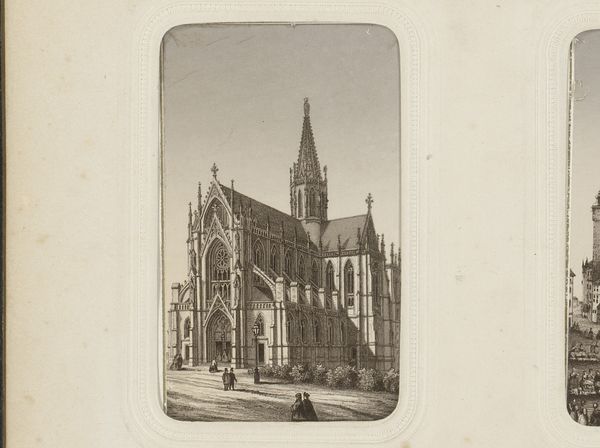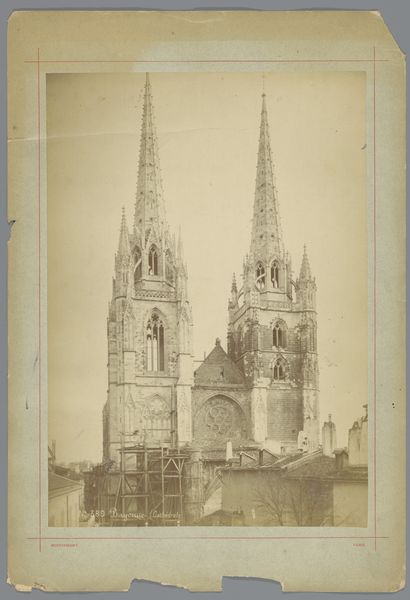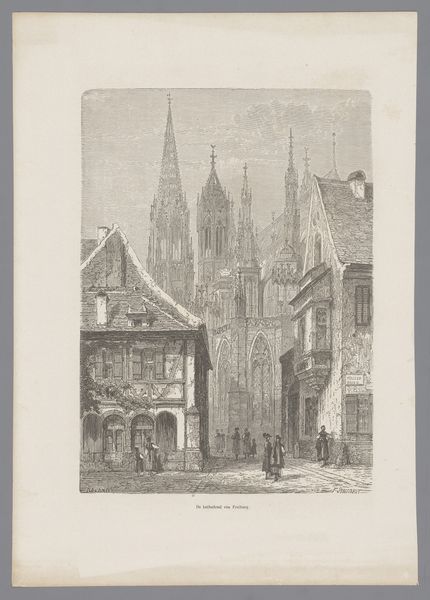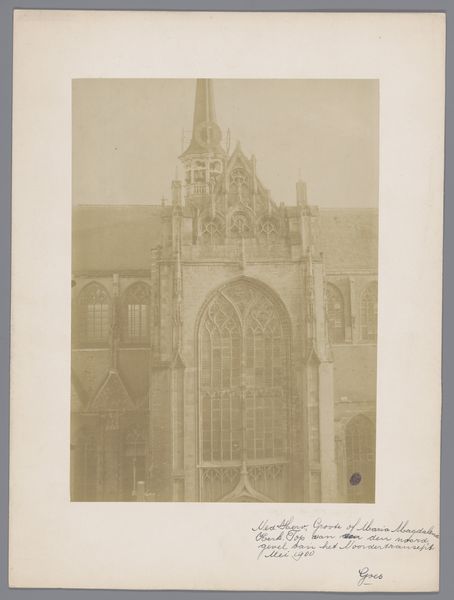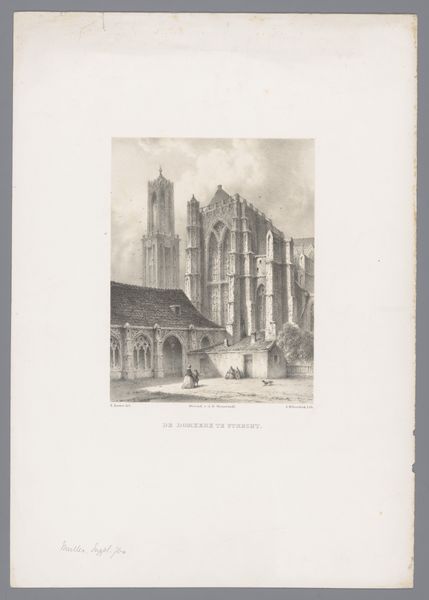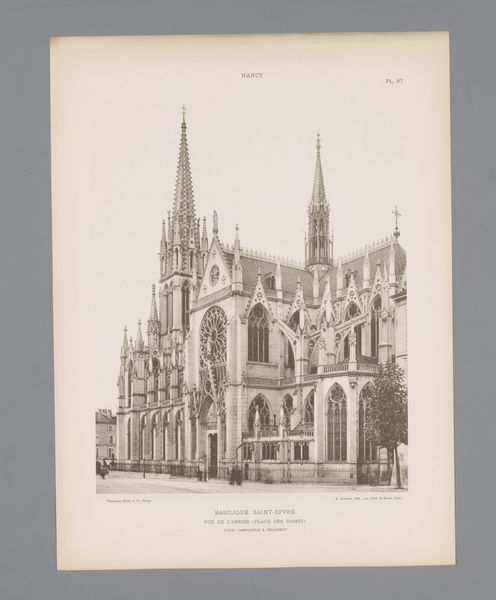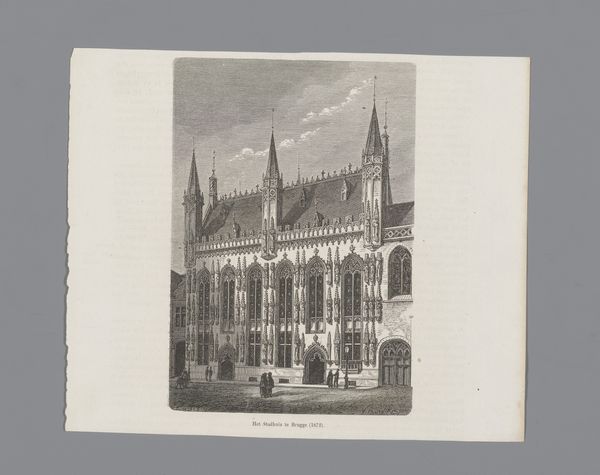
print, photography, architecture
# print
#
photography
#
cityscape
#
architecture
#
realism
Dimensions: height 215 mm, width 154 mm
Copyright: Rijks Museum: Open Domain
Editor: So, this is Charles Bernhoeft’s "Gezicht op de Temple Saint-Étienne te Mulhouse," a photograph from before 1894. The sharp details of the architecture contrast with the softer focus on the surrounding city life. What do you see in this piece beyond the straightforward depiction of a church? Curator: This photograph speaks volumes about the socio-political landscape of the late 19th century. Consider Mulhouse, a city in Alsace, caught between French and German control. Bernhoeft, documenting the Temple Saint-Étienne, isn't merely capturing architecture, but engaging with issues of religious identity and national affiliation. Who was this photograph for? What narratives did it support during a period of intense nationalistic fervor? Editor: That's interesting. I hadn’t thought about the location in that context. How does that influence your reading of the work? Curator: It makes me think about the rise of photography as a tool for national projects, for visually codifying culture. Architecture, especially religious structures, served as symbols of identity. Bernhoeft's realism, while seemingly objective, actively participates in constructing an idea of "Germanness" or perhaps a contested "Alsatianness" at a very specific time of shifting borders and cultural anxieties. Do you see this photo reinforcing power structures or challenging them? Editor: It's hard to say for sure, but knowing the history gives it a different feel. I initially saw it as a pretty, old photograph, but now it seems charged with the tensions of the time. It's a testament to how art can both reflect and shape the political reality. Curator: Exactly! By examining the context, we move beyond simply admiring aesthetic qualities. Instead, we confront art’s active role in society – both past and present. That deeper engagement is where the real power lies.
Comments
No comments
Be the first to comment and join the conversation on the ultimate creative platform.

